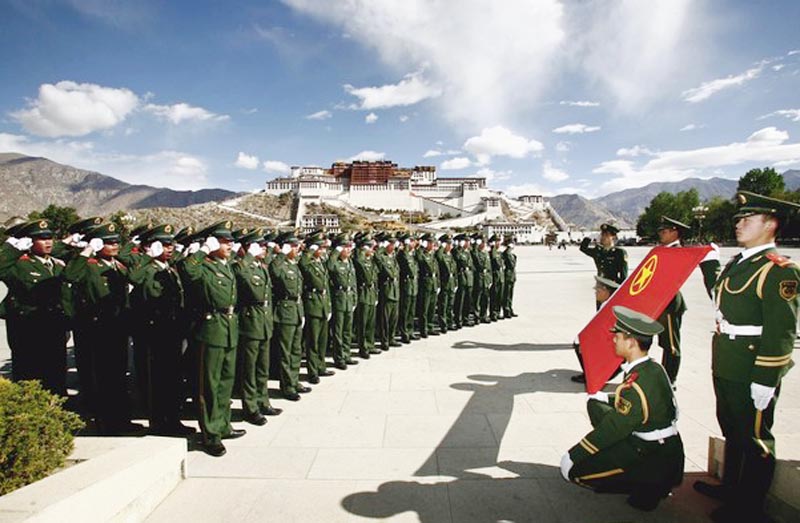 Dharamshala - China claims to have completed a seven-year renovation of Tibet's Potala Palace--a Tibetan national landmark which was heavily damaged by the Chinese military invasion in the 1950s. The communist regime has dubiously added that “the renovation of Potala palace is part of its plan to promote Tibetan culture and language,” according to a report on Monday from a state-run news agency.
Dharamshala - China claims to have completed a seven-year renovation of Tibet's Potala Palace--a Tibetan national landmark which was heavily damaged by the Chinese military invasion in the 1950s. The communist regime has dubiously added that “the renovation of Potala palace is part of its plan to promote Tibetan culture and language,” according to a report on Monday from a state-run news agency. "The project is part of its plan to promote Tibetan culture and language in the region as it develops its economy, of which tourism forms a major part. The renovation, which also repaired the Norbu Lingka, a summer palace for the Dalai Lamas, cost 300 million yuan ($43.9 million)," the Xinhua report continued.
Tibetan spiritual leader His Holiness the Dalai Lama has argued that there is a culture of genocide in Tibet, as Tibetan culture has been threatened by the Chinese government's heavy restrictions on the Tibetan religion and language, coupled with a government-orchestrated mass migration of Han Chinese to Tibet over the past three decades. A large number of ancient temples, including more than 6,000 monasteries, and countless other treasured artifacts were destroyed, and over 1.2 million Tibetan people have died as a result of the Communist occupation since the 1950s. Moreover, the Communist regime of China burned or destroyed thousands of cherished Tibetan Buddhist scriptures during Chinese Cultural Revolution from 1966 to 1976.
A ceremony was held on Sunday on the square in front of the Potala, whose glamorous facade looms over the city of Lhasa. More than 189,000 workers were involved in this project, and the government spent an additional 94.74 million yuan ($13.9 million) repairing the Sagya Monastery, which houses classical Buddhist texts. Xinhua quoted a former director of the Potala's administration office saying the palace could now accommodate one thousand visitors a day.
The Chinese officials claims that the renovations are part of a 570 million yuan ($73 million) plan to promote tourism to Tibet, a mainstay of the region's economy. This plan reputedly includes the reparation of 22 cultural sites in total. Earlier this year, China tightened restrictions on advertising and construction outside of the palace, following calls from the United Nations to better preserve the UNESCO World Heritage Site's natural setting.
Although palaces have existed on the grounds of the Potala since the seventh century, the current building dates from the rule of the fifth Dalai Lama, known as the "Great Fifth," who started its construction in 1645. Since his time, the Potala has been used as a living quarters and winter palace by each of the Dalai Lamas.


![Tibet has a rich history as a sovereign nation until the 1950s when it was invaded by China. [Photo: File]](/images/stories/Pics-2024/March/Tibet-Nation-1940s.jpg#joomlaImage://local-images/stories/Pics-2024/March/Tibet-Nation-1940s.jpg?width=1489&height=878)















